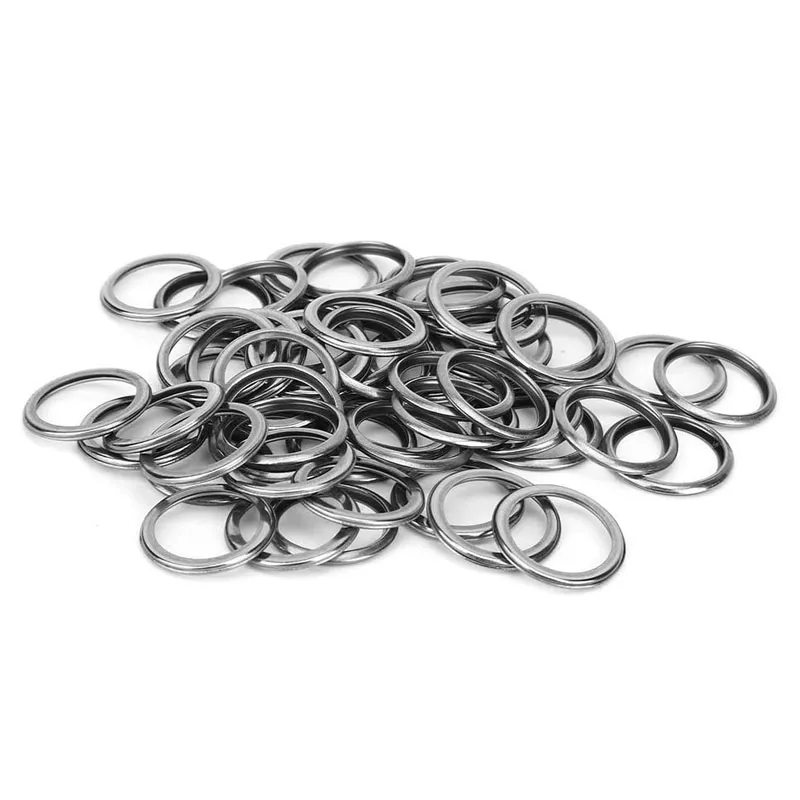Front Crank Oil Seal Replacement Guide for Improved Engine Performance and Efficiency
Understanding Front Crank Oil Seals Importance and Maintenance
The front crank oil seal is a critical component in an internal combustion engine that plays a significant role in ensuring optimal performance and longevity of the engine. It serves as a barrier between the engine oil and the outside environment, preventing oil leakage and protecting engine components from dirt, dust, and other contaminants. In this article, we will explore the anatomy, importance, and maintenance of front crank oil seals, as well as common signs of wear and potential replacements.
Anatomy of Front Crank Oil Seal
The front crank oil seal is typically made from high-quality rubber or polymer materials and is designed to fit snugly around the crankshaft, which is responsible for converting the linear motion of the pistons into rotational motion. The seal creates a tight fit that prevents engine oil from leaking out while also keeping external contaminants out of the engine. Depending on the engine design, front crank oil seals may come in different shapes and sizes, but they all serve the same fundamental purpose.
Importance of Front Crank Oil Seals
The importance of front crank oil seals cannot be overstated. First and foremost, they maintain the proper level of engine oil, which is essential for lubrication. Adequate lubrication reduces friction between moving parts, which significantly minimizes wear and tear on the engine components. Additionally, the presence of engine oil helps in dissipating heat generated during combustion, thus preventing overheating.
Another vital function of the front crank oil seal is to protect the crankshaft and its bearings from contaminants. Without a functioning seal, dirt, dust, and water could easily enter the engine, leading to premature wear of vital components and potentially catastrophic engine failure. Maintaining the integrity of the front crank oil seal is therefore essential for ensuring a long and healthy engine life.
Signs of a Bad Front Crank Oil Seal
Despite their durability, front crank oil seals can wear out over time due to various factors such as high temperatures, contamination, and mechanical stress. Here are some common signs that the front crank oil seal may need to be replaced
1. Oil Leaks One of the most evident signs of a failing front crank oil seal is engine oil leaking from the front of the engine. If you notice oil spots under your vehicle or on the engine itself, it's crucial to investigate further.
2. Increased Oil Consumption If your vehicle’s oil level is dropping more frequently than usual, this could indicate a leak at the front crank oil seal. Regularly checking and refilling oil can be a temporary workaround, but addressing the seal is essential for long-term health.
front crank oil seal

3. Visible Wear or Damage In some cases, you may be able to visually inspect the seal and find signs of wear, cracks, or brittleness. This is particularly true in older vehicles where rubber components may degrade with age.
4. Whining or Grinding Noises Unusual noises coming from the engine could also signal that something is wrong. Lack of lubrication due to a faulty oil seal can lead to increased friction and noise.
Maintenance and Replacement
Regular maintenance of your vehicle can help prolong the life of the front crank oil seal. Here are some tips
- Routine Inspections Regularly check your engine for leaks and inspect seals during oil changes or routine maintenance visits.
- Use Quality Engine Oil Using the correct type of oil can prevent excessive wear on seals and other components. Always follow the manufacturer's recommendations.
- Monitor Oil Levels Keeping an eye on your oil levels and topping them off can help avoid potential damage from leaking oil.
If you experience any of the aforementioned symptoms of a failing front crank oil seal, it is advisable to consult a mechanic immediately. Replacing a worn or damaged seal is typically a straightforward process, but it requires removing the timing belt or chain, so it’s best left to professionals.
Conclusion
In conclusion, the front crank oil seal is a small but vital component of any internal combustion engine. It ensures the engine operates efficiently by preventing oil leakage and contamination. Regular maintenance, prompt attention to leaks, and a willingness to replace worn seals are essential for maintaining your vehicle’s engine health and performance over time. Prioritizing these actions will lead to a smoother-running engine and reduce the risk of costly repairs down the road.
-
Understanding the Front Main Engine Seal: Purpose, Maintenance, and Installation
News Jul.29,2025
-
Understanding O-Rings and Seal Rings: Types, Applications, and Custom Solutions
News Jul.29,2025
-
Understanding Crankshaft Oil Seals: Rear Seals, Pulley Seals, and Their Role in Engine Integrity
News Jul.29,2025
-
The Importance of Front and Rear Crankshaft Seals in Engine Performance and Oil Management
News Jul.29,2025
-
Crank Oil Seals: Functions, Types, and Cost Considerations in Engine Maintenance
News Jul.29,2025
-
A Comprehensive Guide to O-Rings and Seals: Types, Materials, and Global Applications
News Jul.29,2025
-
Mastering Diesel and Performance Engine Maintenance: A Guide to Critical Oil Gaskets
News Jul.28,2025
Products categories















